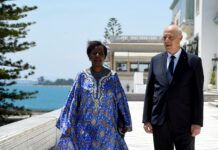The most important intellectual productions and academic researches, as well as literary and artistic works, are those that shed light on the abandoned, the unaccounted for, and the hidden.
And if it comes to historiography – that is, writing history – as a recording of what happened in a certain era and as an immortalization of the actions of people and their achievements, there is no doubt that the historian’s job often depends on deletion and denial regarding many events and people.
This is due to the official historical institution’s association with the existing authority and its compliance with what it likes and dictates. Among the topics that are not covered in many of the historical texts that are recognized and approved as references, we find, especially the grievances that people or sects have been subjected to, which makes any attempt to shed light on it and lift the veil on it occupies the utmost importance due to its corrective tendency and the audacity that characterizes everyone who has taken upon him/herself the duty to write about it and historicize it.
Within this research field falls the book Morisky Articles and Readings by the Tunisian researcher and writer Ahmed Hamrouni, published by the House of Arabic Inscriptions (Arabesque).
Ahmed Hamrouni is “a writer who has devoted his time for decades to research and writing on a topic that has exceeded the degree of interest to reach the level of passion and love, which is the topic of the Moriscos in general and the history of Testour in particular.”
The Moriscos are the Muslims who remained in Spain under Christian rule after the fall of the Islamic kingdom and were given the choice between converting to Christianity or leaving Spain… Whereas between 1609 and 1614 the Moriscos were forced to leave towards the countries of North Africa and towards the Levant and Turkey after the fall of Andalusia, and they are currently located in Algeria, Tunisia, Morocco and Libya.
Ahmed Hamrouni diversified his research sources and expanded them to include the intangible heritage, as he employed the popular memory as a tributary worthy of preservation, whose value sometimes exceeds the value of some other historical tributaries, as stated in Dr. Reda Mami’s introduction to the book. Perhaps the value of this research work also derives from the fact that it falls within the scope of the efforts exerted to shed light on what was unknown from Moorish literature, especially what was written of it in exile. This literature, which is full of pains and which despite its great importance in the history of human literature has only been ignored by Arabs and others. “Those who were expelled from Andalusia in the late 16th and early 17th centuries – as Dr. Reda Mami says – were subjected to persecution the likes of which was unknown in human history, torture, abuse, burning and mutilation. The Moriscos depicted some of this in their literature, drawing the features of their oppressed souls, driven to homelessness… “
In the first section of the book, we find articles of great importance in terms of content and style, which are not without objectivity and academic scholarship. They are, respectively: a Granada ray on the Maghreb, a century of Tunisian Moorish Andalusian women, human and geographic names and Andalusian Moorish terms, Tunisian Moors from duality to integration, Moorish people outside their field in Tunisia, Moorish experience in Tunisia, Moorish culture, and finally the Moorish perspectives. So, it is clear – based on the titles of the articles mentioned – that the importance of the first section of the book is mainly derived from its study of the Arab sites in Andalusia, in addition to the study of the people and the Granadian influence in the Maghreb and the Moriscos in Tunisia and the path of their integration and their impact and interaction.
As for the second section, albeit secondary, the author devoted it to presenting historical and literary works on the Andalusian and their antiquities and the Moors and their conditions, which makes it a reference point that is not without importance. The third documentary section was dedicated by Ahmed Hamrouni to the new references as an addition to the bibliography published successively in his previous books on the subject.
Morisco Articles and Readings is a contribution to the historical efforts made to enrich the Maghreb “research” corpus, and it is, as Dr. Reda Mami put it – “one of the academic efforts that still need voices that communicate what has not yet been reported and eyes that see from its angles what has not been reported.”
Dear readers, this corner will be devoted, every Sunday, to presenting and analyzing Tunisian books or books on Tunisian issues.











